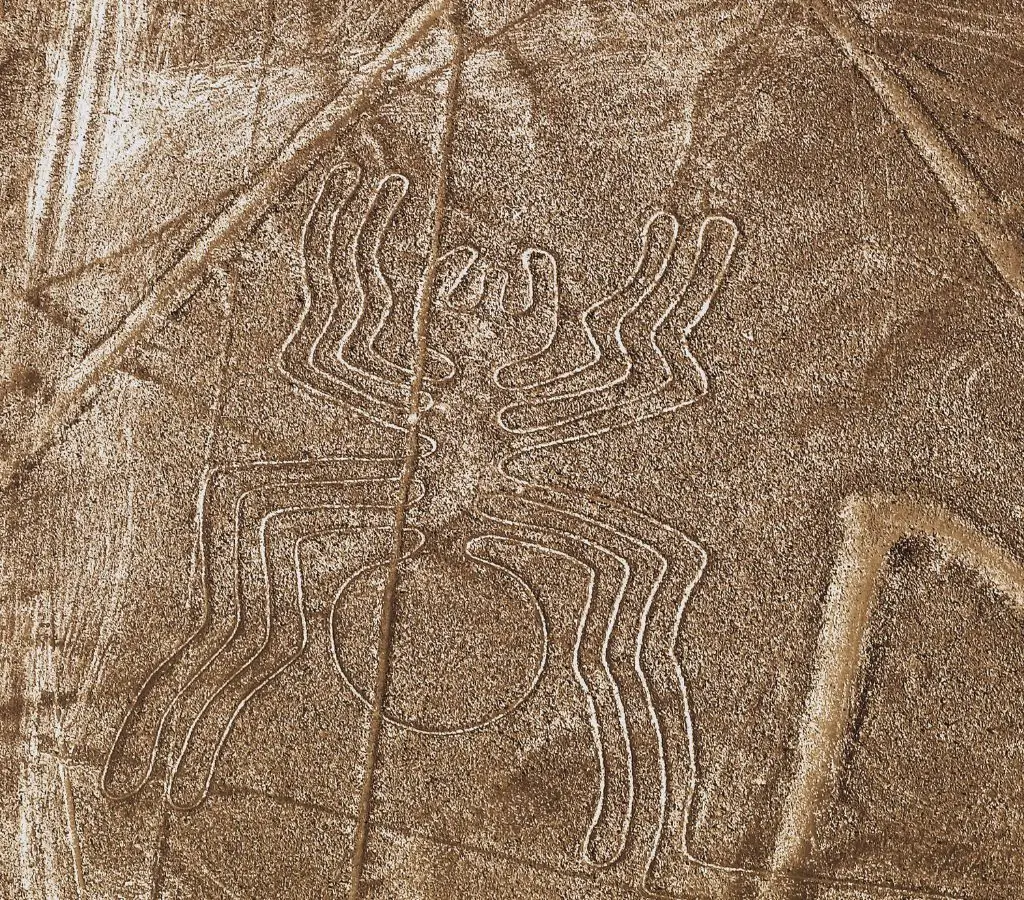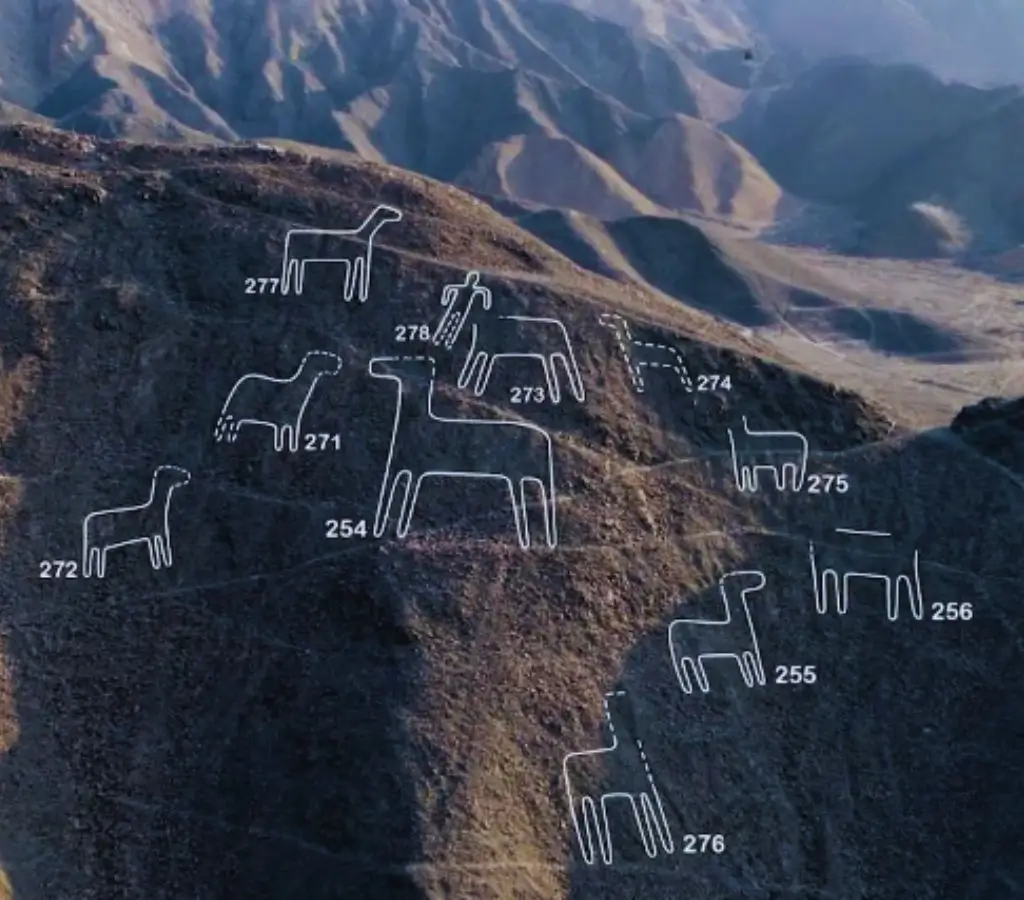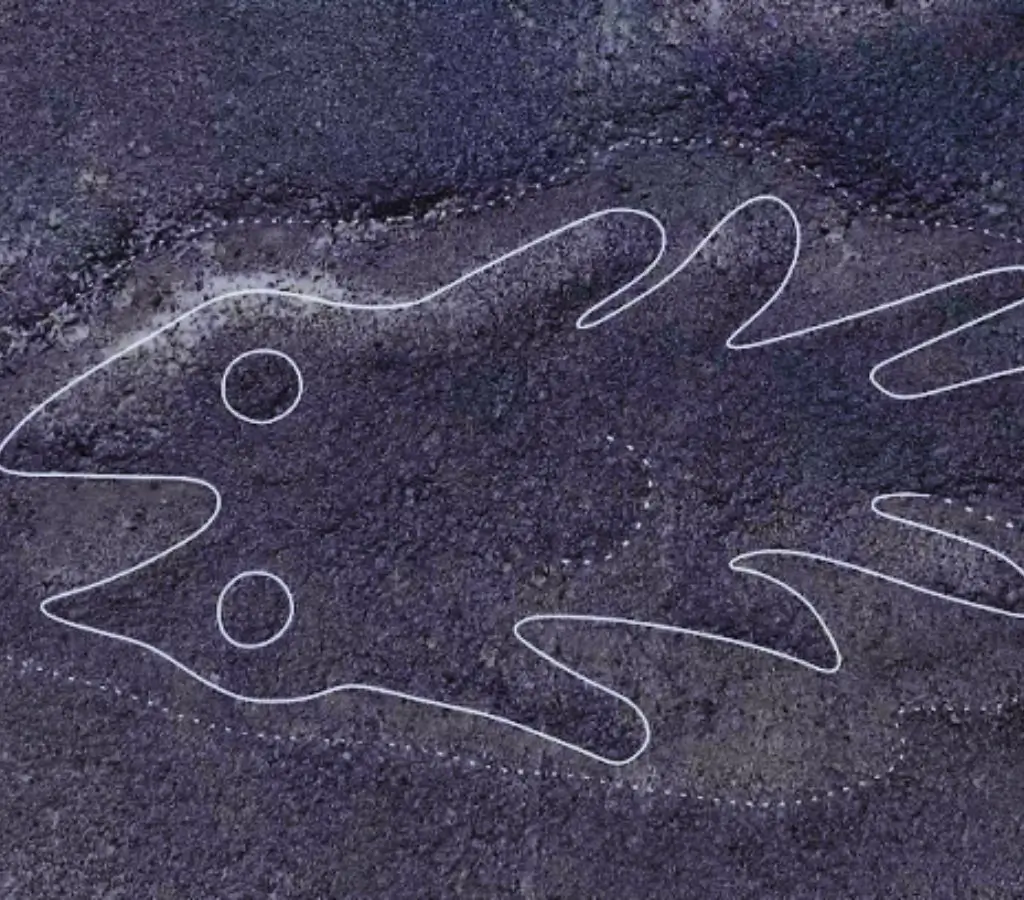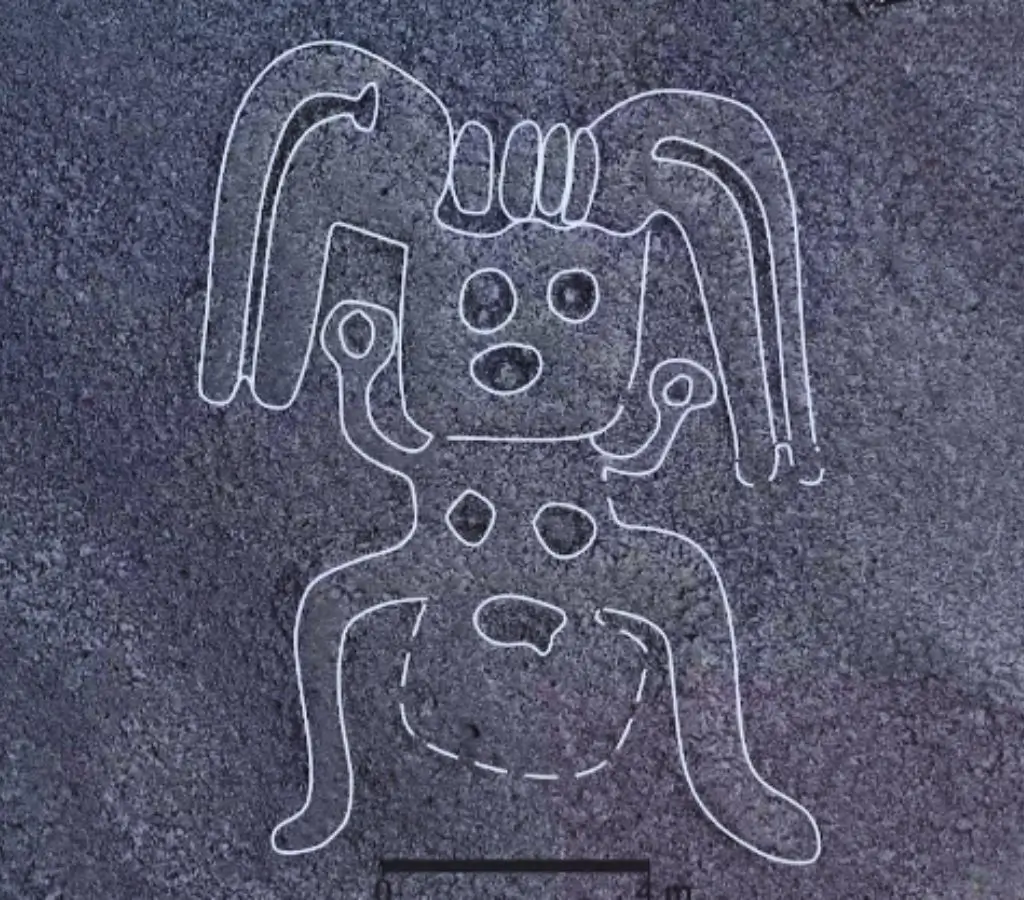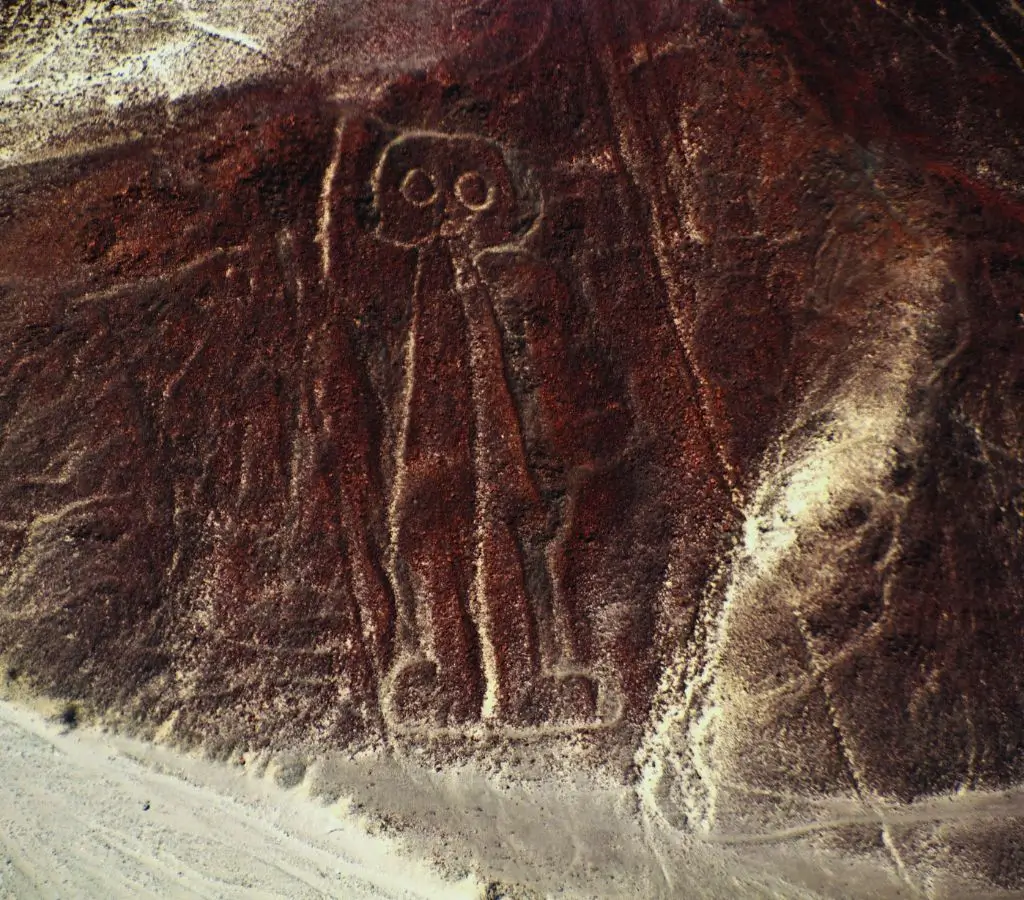The Nazca Lines, carved into the earth by the ancient Nazca culture, feature different figures like the monkey, spider, hummingbird, etc. The purpose of these figures remains a mystery, as there are many theories studied by experts.
This archaeological treasure continues to spark interest, and in this journey, we will explore its origin, the meaning of the geoglyphs, and the best time to visit and admire the figures.
The Nazca Lines are giant geoglyphs located in the Nazca desert in southern Peru, featuring geometric figures and animal representations with impressive precision and scale, some figures exceeding 200 meters in length. These figures reflect the skill and ingenuity of the ancient Nazca culture.
The origin and purpose of the Nazca Lines remain an enigma, raising questions about how they were formed and whether extraterrestrial intervention occurred. Although they are believed to have been created by the Nazca civilization between the 1st and 7th centuries AD, the most accepted theory is that they served a religious or ceremonial purpose related to agricultural rituals or astronomical beliefs.
Other theories suggest the lines could have been ceremonial routes for religious processions or astronomical calendars. Despite various interpretations, the mystery persists, as there is no definitive answer explaining their full purpose.
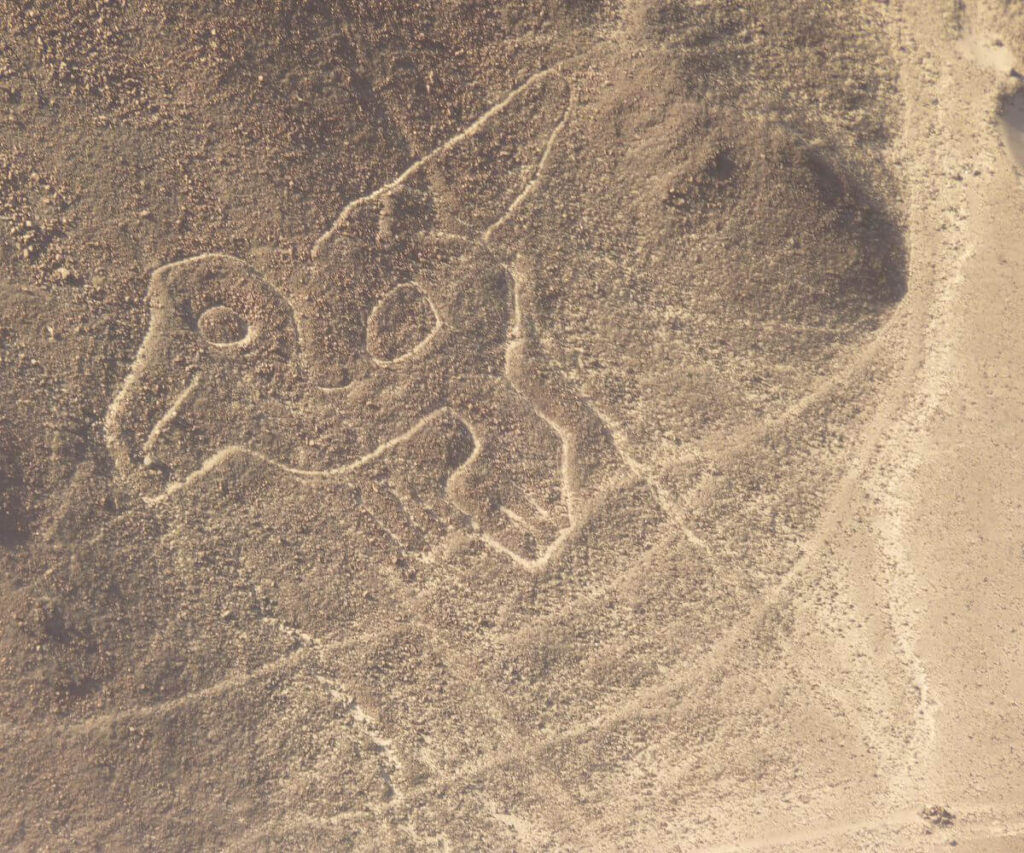
The Nazca Lines were created by the Nazca civilization, a pre-Inca culture from southern Peru. Their purpose remains uncertain, although theories have been proposed related to religion, agricultural rituals, astronomy, and connection with divine beings. Despite various hypotheses, such as their use in religious ceremonies or as indicators of astronomical positions, the true purpose remains an unsolved mystery.
The Nazca Lines, created by the Nazca civilization in southern Peru, remain an enigma. Although theories have been suggested linking them to religion, agricultural rituals, and astronomy, the exact purpose remains uncertain.
Some of the most common hypotheses include their use in religious ceremonies or as astronomical references, but there is still no clear evidence to confirm their true meaning.
The Nazca Lines are located in the Nazca region, south of Lima, in an arid and sandy area; this site, covering about 450 square kilometers, is famous for its geoglyphs and was declared a UNESCO World Heritage site due to its impressive historical value.
The Nazca Lines include various figures such as straight lines, animals like birds, mammals, and fish, as well as geometric and abstract shapes. Among the most famous are the hummingbird, monkey, spider, and condor.
Although these figures are believed to have religious, astronomical, or ceremonial significance for the Nazca culture, their true purpose remains unknown.
The hummingbird is one of the most prominent figures in the Nazca Lines, with a length of approximately 96 meters. It is one of the largest and best-preserved geoglyphs in the region, depicting a hummingbird in flight with its wings extended.
It is believed that this figure held special significance for the Nazca culture, possibly representing a flying god. Its size and precision reflect the ancient Nazca's skill and their deep connection with nature.
The monkey and the "astronaut" are two of the most enigmatic geoglyphs of the Nazca Lines, sparking various theories. The monkey, 135 meters long, represents the animal in motion, while the "astronaut," 30 meters long, has been interpreted by some as an extraterrestrial being or a "man-owl." These figures continue to fuel speculations about visits from advanced civilizations in the past.
Other notable figures in the Nazca Lines include the spider and the condor. The spider, 46 meters long, could have been created as a symbol related to the fight against drought.
The condor, located between the dog and the spider, is a significant bird for the southern region, especially for the Incas. However, detailed information about the meaning and context of each of these figures is still lacking.
The study of the Nazca Lines has been crucial to understanding the Nazca culture and its past. Archaeologists and scientists, from Paul Kosok and Maria Reiche to current technological advancements, have worked to unravel the mystery behind these figures, although doubts remain about their purpose and how such precise shapes were created.
The Nazca Lines were discovered in 1927 by archaeologist Toribio Mejía Xespe, who, upon observing them from an airplane, revealed these figures etched into the earth for the first time. This discovery marked a new chapter in Peruvian archaeology, sparking global interest.
The news quickly attracted archaeologists and scientists, with German Maria Reiche being the first to study the Nazca Lines. Since then, her research has been crucial to understanding these enigmatic figures and the civilization that created them.
Paul Kosok and Maria Reiche were two of the pioneers in the study of the Nazca Lines. American anthropologist P. Kosok was one of the first to recognize the importance of the lines as astronomical calendars, while Reiche, a German mathematician and archaeologist, dedicated much of her life to studying and preserving the lines.
Their research and discoveries helped shed light on the purpose and meaning of the lines, and their work continues to inspire archaeologists and scientists who are studying this ancient mystery.
Recent technological advances, such as aerial photography, satellites, and artificial intelligence, have allowed the Nazca Lines to be studied in unprecedented detail; this has led to new discoveries about the Nazca civilization and its legacy in the Peruvian desert. New lines continue to be discovered, further expanding knowledge of this mysterious culture.
Technology has transformed the study of the Nazca Lines, from aerial photography to artificial intelligence and satellite remote sensing. These advances allow researchers to analyze the lines with greater detail and precision.
Aerial photography has uncovered new figures and patterns, while satellite use helps monitor their conservation and detect threats, such as human encroachment or erosion.
The preservation of the Nazca Lines is essential due to erosion, human traffic, and other potential damages. Measures have been taken, such as restricting access, encouraging responsible tourism, and promoting their recognition as a World Heritage site to raise awareness of their value and vulnerability.
The Nazca Lines have withstood the test of time in an extremely arid environment, which has intrigued scientists. Despite the scarce rainfall and erosion, these figures have remained intact for centuries.
The dry climate, with only 2 millimeters of rainfall per year and constant temperatures between 20 and 25 degrees Celsius, has favored their preservation. Additionally, the soil where they are located, composed of clay and silt, protects the lines from natural erosion.
Additional protection comes from the surrounding mountains, which act as barriers against strong winds. These conditions, combined with the skill of the ancient Nazca people, have ensured the preservation of these extraordinary figures.
Conserving the Nazca Lines is a priority for Peruvian authorities and UNESCO, who have taken measures to protect them. These measures include restricting access, promoting responsible tourism, and educating people about their cultural and historical value.
Visiting the Nazca Lines is a unique experience accessible through tours and scenic flights, allowing you to appreciate their magnitude. It's crucial to travel responsibly, respecting the environment and conservation guidelines to protect these figures.
The best time to visit the Nazca Lines is from December to March, when the winds are lower and visibility improves. It's important to consider the high season when planning your visit for a better experience.
Flying over the Nazca Lines is a unique experience that allows you to view the geoglyphs from the air. Flights vary from 30-minute trips to longer routes that include other points of interest in the region.
During the flight, passengers can appreciate figures such as animals, straight lines, and geometric shapes spread across the desert.
It's essential to choose an experienced company and make reservations in advance, especially during peak season, to ensure safety and availability.
Tour packages to the Nazca Lines are a convenient and popular option for travelers who want to explore this fascinating archaeological site in Peru.
The 1-day tour to the Nazca Lines with Illapa Culturas Andinas allows you to explore the Lines and their surroundings in an organized excursion. It includes air-conditioned transportation, specialized guides, and optional scenic flights over the figures.
The tour may also include visits to the Antonini Museum, which displays artifacts from the Nazca culture, and to the Lines' viewpoint, which offers panoramic views of the desert.
This option is ideal for those with limited time but who want to visit the region's main attractions in a single day.
Complete packages to the Nazca Lines are perfect for those seeking an organized experience that covers transportation, accommodation, and activities. These tours offer comfort and safety when traveling with a reliable operator, such as the South Peru tour, which allows you to explore much of the region: https://illapa.com/es/tours/culturales/tour-por-el-sur-del-peru-15-dias/

